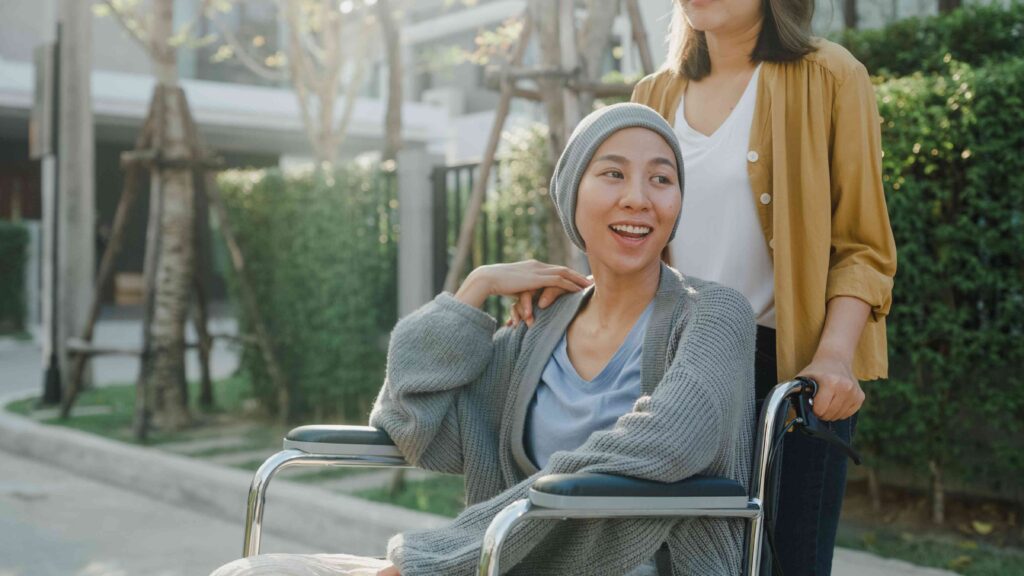:max_bytes(150000):strip_icc():format(jpeg)/Health-GettyImages-1756374558-ae27f6c7bf4f43d4bde6ba551f360e23.jpg)
Leukemia is a cancer that changes blood cells. It usually develops in the bone marrow, the inner part of the bone that makes immature cells that eventually develop into red blood cells, white blood cells, and platelets. Possible signs of leukemia include fevers, fatigue, bleeding, and bruising.
There are many types of leukemia, and they may have similar signs and symptoms. Acute types grow and spread quickly, while chronic (long-term) types develop slowly and may not cause symptoms for years.
Knowing the type of leukemia you have helps you and your healthcare team create the right treatment plan for you.
Acute types of leukemia are fast-growing cancers that start in the bone marrow and quickly spread to the bloodstream. Acute leukemias are classified based on which types of cells they affect.
Acute Lymphocytic Leukemia (ALL)
Acute lymphocytic leukemia (ALL) is the most common type of leukemia. It affects the lymphoid cells in the bone marrow, which are immature white blood cells that develop into lymphocytes.
Lymphocytes are the main cells that make up the lymph tissue, part of the immune system. There are two types of lymphocytes: B and T. B lymphocytes protect the body by making proteins called antibodies to destroy bacteria, viruses, and fungi in the body. T lymphocytes destroy germs and regulate the activity of other immune system cells.
ALL is fast-growing, and cancer cells quickly crowd out healthy blood cells. A shortage of healthy blood cells may cause the following symptoms:
- Fatigue
- Paleness
- Fever
- Weakness
- Frequent infections
- Shortness of breath
- Bleeding
- Bruising
ALL most often occurs in children and in adults over 50. This type of leukemia makes up about 3 in 4 cases of childhood leukemia.
Besides age, other risk factors for ALL include radiation exposure, chemical exposure, certain viral infections, some genetic conditions, and sex (it’s more common among males).
Acute Myeloid Leukemia (AML)
Acute myeloid leukemia (AML) develops in the bone marrow’s myeloid cells. Myeloid cells are immature white blood cells that develop into red blood cells, platelets, and certain white blood cells known as neutrophils. AML is more aggressive than ALL and tends to spread faster.
AML cells can quickly spread to the blood, lymph nodes, liver, spleen, brain, spinal cord, or testicles. Signs and symptoms of AML include fatigue, fever, night sweats, loss of appetite, and unintended weight loss.
This type is most likely to develop in older adults but may also affect children.
Chronic types of leukemia grow and spread more slowly than the acute types.
Chronic leukemias develop in partly mature blood cells. These cells tend to look like healthy cells, but they aren’t. Partially developed white blood cells don’t function normally and cannot fight infection effectively. It is possible to have chronic leukemia for years before experiencing symptoms.
Chronic Lymphocytic Leukemia (CLL)
Chronic lymphocytic leukemia (CLL) affects the lymphoid cells in the bone marrow. It is the most common type of slow-growing leukemia. CLL cells may build up in the bone marrow for years before spreading to the lymph nodes, liver, or spleen.
Most cases of CLL occur in people over age 50. This type of leukemia is rare in children.
Possible symptoms of CLL include:
Chronic Myeloid Leukemia (CML)
Chronic myeloid leukemia (CML) starts in the myeloid cells in the bone marrow. Myeloid cells develop into mature red blood cells, platelets, and certain white blood cells. CML is a slow-growing cancer but may develop into acute leukemia.
CML usually affects older adults and is extremely rare in children.
Possible symptoms include:
- Fatigue
- Weakness
- Fever
- Night sweats
- Unintended weight loss
- Bone pain
- Enlarged spleen, which could show as a mass under the left side of the ribcage
Chronic Myelomonocytic Leukemia (CMML)
Chronic myelomonocytic leukemia (CMML) is a less common type of chronic leukemia that causes too many monocyte cells to build up in the blood. It often causes an enlarged spleen, so people with CMML may notice a mass under their left ribcage. They may also feel a sense of fullness and may only be able to eat small amounts of food at a time.
CMML may develop into AML in about 15-30% of people.
The only way to know which type of leukemia you have is to see your healthcare provider for testing. It isn’t possible to determine your type based on symptoms alone. Acute leukemias tend to grow and spread quickly and may cause more symptoms than chronic leukemias.
To determine your leukemia type, your healthcare provider will test your blood and bone marrow. They will send your samples to a lab for a pathologist to review under a microscope.
See your healthcare provider if you develop any signs or symptoms of leukemia. Depending on the type of leukemia, early diagnosis and treatment are important for a better prognosis and more varied treatment options.
Symptoms to watch out for include daily fatigue and weakness, fevers with no other symptoms, and increased bleeding or bruising.
If your provider suspects you have leukemia, they will order several diagnostic tests, including blood tests and a bone marrow biopsy.
Treatment options for leukemia may include:
- Chemotherapy: This treatment uses medicines to destroy cancer cells, stop their spread, and slow their growth.
- Radiation therapy: This treatment uses high amounts of radiation to destroy cancer cells and stop their spread. There are two types of radiation: internal and external. With internal radiation, a healthcare provider places radioactive substances in the body. With external radiation, they use special machines that aim radiation at the cancer in the body.
- Immunotherapy: This treatment boosts a person’s immune system or uses lab-created antibodies (proteins) to destroy or slow the growth of cancer cells.
- Targeted therapy: This treatment uses drugs that attack specific cancer cells while minimizing harm to normal cells.
Chemotherapy is the most common treatment for leukemia. Treatment options will depend on the type of leukemia diagnosed and its severity.
There is no proven way to prevent leukemia. Many people who have leukemia don’t have any risk factors. Smoking may raise the risk of certain types of leukemia, including acute myeloid leukemia (AML). Quitting or avoiding tobacco smoke may lower your risk.
Leukemia is a cancer that affects the blood and bone marrow. It usually develops in the bone marrow and affects immature cells that develop into white blood cells, red blood cells, and platelets. There are several types of leukemia, classified based on how quickly they grow and spread.
Acute leukemias are fast-growing and include acute lymphocytic leukemia (ALL) and acute myeloid leukemia (AML). Chronic leukemias may grow for years before causing symptoms. Types of chronic leukemia include chronic lymphocytic leukemia (CLL), chronic myeloid leukemia (CML), and chronic myelomonocytic leukemia (CMML).
See your healthcare provider if you develop any signs of leukemia, such as fatigue, weakness, fevers, night sweats, bleeding, and bruising.













